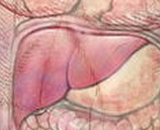Alcoholic Hepatitis (AH)
Alcoholic Liver Disease

Alcoholic hepatitis, alcoholic liver disease is inflammation of the liver due to excessive intake of alcohol. It is usually found in association with fatty liver, an early stage of alcoholic liver disease, and may contribute to the progression of fibrosis, leading to cirrhosis. Signs and symptoms of alcoholic hepatitis include jaundice, ascites, fatigue and hepatic encephalopathy. Mild cases are self-limiting, but severe cases have a high risk of death. Severe cases may be treated with glucocorticoids.
Animal models for alcoholic hepatitis contain 'ethanol intragastric feeding model','Lieber-Decarli model' and ‘Tsukarnoto-French model'etc.. The use of animal models has contributed to greater understanding of how alcoholic hepatitis develops, and of how the severity of liver injury is influenced by factors other than alcohol, such as nutrition, oxygen deprivation and gene regulation.
Organism species: Mus musculus (Mouse)
- Disease model DSI531Mu01 Mouse Model for Alcoholic Hepatitis (AH) In Stock
- Disease model DSI531Mu02 Mouse Model for Alcoholic Hepatitis (AH) In Stock
- Customized Service n/a Tissue of Alcoholic Hepatitis (AH) (If Necessary) Tissue Customized Service Offer
- Customized Service n/a Serums of Alcoholic Hepatitis (AH) (If Necessary) Serums Customized Service Offer
Organism species: Rattus norvegicus (Rat)
- Disease model DSI531Ra01 Rat Model for Alcoholic Hepatitis (AH) In Stock
- Disease model DSI531Ra02 Rat Model for Alcoholic Hepatitis (AH) In Stock
- Customized Service n/a Tissue of Alcoholic Hepatitis (AH) (If Necessary) Tissue Customized Service Offer
- Customized Service n/a Serums of Alcoholic Hepatitis (AH) (If Necessary) Serums Customized Service Offer
Organism species: Cavia (Guinea pig )
- Disease model DSI531Gu01 Cavia Model for Alcoholic Hepatitis (AH) In Stock
- Customized Service n/a Tissue of Alcoholic Hepatitis (AH) (If Necessary) Tissue Customized Service Offer
- Customized Service n/a Serums of Alcoholic Hepatitis (AH) (If Necessary) Serums Customized Service Offer
Organism species: Oryctolagus cuniculus (Rabbit)
- Disease model DSI531Rb01 Rabbit Model for Alcoholic Hepatitis (AH) In Stock
- Disease model DSI531Rb02 Rabbit Model for Alcoholic Hepatitis (AH) In Stock
- Disease model DSI531Rb03 Rabbit Model for Alcoholic Hepatitis (AH) In Stock
- Disease model DSI531Rb04 Rabbit Model for Alcoholic Hepatitis (AH) In Stock
- Customized Service n/a Tissue of Alcoholic Hepatitis (AH) (If Necessary) Tissue Customized Service Offer
- Customized Service n/a Serums of Alcoholic Hepatitis (AH) (If Necessary) Serums Customized Service Offer
Organism species: Canis familiaris; Canine (Dog)
- Disease model DSI531Ca01 Canine Model for Alcoholic Hepatitis (AH) In Stock
- Customized Service n/a Tissue of Alcoholic Hepatitis (AH) (If Necessary) Tissue Customized Service Offer
- Customized Service n/a Serums of Alcoholic Hepatitis (AH) (If Necessary) Serums Customized Service Offer


